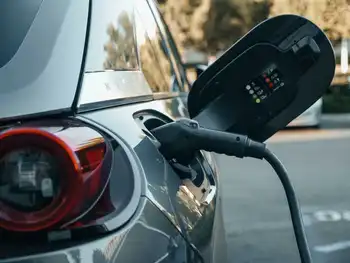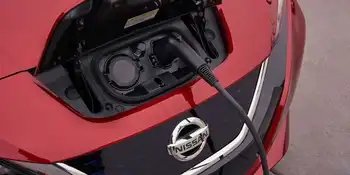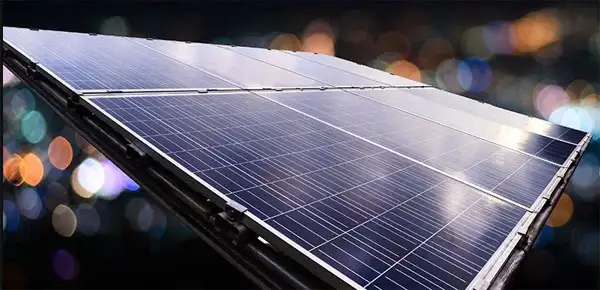Hydro One Networks Inc. - Ivy, ONroute and Canadian Tire make it easy to charge your next road trip

NFPA 70b Training - Electrical Maintenance
Our customized live online or in‑person group training can be delivered to your staff at your location.

- Live Online
- 12 hours Instructor-led
- Group Training Available
ONroute EV Charging Stations now live on Ontario's Highways 401 and 400, powered by Ivy Charging Network with 150 kW fast chargers, Tesla-compatible ports, Canadian Tire support, and government-backed clean transportation infrastructure.
Key Points
ONroute EV Charging Stations are Ivy-managed 150 kW fast-charging hubs along Highways 401/400, compatible with all EVs.
✅ Up to 150 kW DC fast charging; ~100 km added in about 10 minutes
✅ Compatible with all EV models, including Tesla-compatible ports
✅ Located along Highways 401/400; 2-4 chargers per ONroute site
Electric vehicle (EV) drivers can now charge at 10 ONroute locations along Highways 401 and 400, reflecting progress on the province's charging network rollout to date.
Ivy Charging Network, ONroute and their partners, Canadian Tire Corporation (CTC) and the Ministry of Transportation (MTO) announced the opening of four Charge & Go EV fast-charging stations today: Ingleside, Innisfil, Tilbury North, Woodstock
Each of Ivy's Charge & Go level 3 fast-chargers at ONroute locations will support the charging of all EV models, including charging ports for Tesla drivers.
Quick Facts
Ivy Charging Network is installing 69 level 3 fast-chargers across all ONroute locations, with the possibility of further expansion as Ontario makes it easier to build charging stations through supportive measures.
Ivy's ONroute Charge & Go locations will offer charging speeds of up-to 150 kWs, delivering up to a 100 km charge in 10 minutes.
This partnership is part of CTC's ongoing expansion of EV charging infrastructure across Canada, as utilities like BC Hydro add more stations across southern B.C.
Ivy Charging Network is a joint venture between Hydro One and Ontario Power Generation.
Natural Resources Canada, through its Electric Vehicle and Alternative Fuel Infrastructure Deployment Initiative, invested $8-million to help build the broader Ivy Charging Network, alongside other federal funding for smart chargers supporting deployments, providing access to 160 level 3 fast-chargers across Ontario including these ONroute locations.
'Our partnership with ONroute, Canadian Tire and the Ontario Ministry of Transportation will end range anxiety for EV drivers travelling on the province's major highways. These new fast-charging locations will give drivers the confidence they need on their road trips, to get them where they need to go this summer,' said Michael Kitchen, General Manager, Ivy Charging Network.
'ONroute is proud to now offer EV charging stations to our customers, in partnership with Ivy and Canadian Tire. We are focused on supporting the growth of electric cars and offering this convenience for our customers as we strive to be the recharge destination for all travelers across Ontario,' said Melanie Teed-Murch, Chief Executive Officer of ONroute.
'Together with our partners, CTC is proud to announce the opening of EV fast-charging stations at four additional ONroute locations along the 400-series highways. Our network of EV charging stations is just one of the ways CTC is supporting EV drivers of today and tomorrow to make life in Canada better, with growth similar to NB Power's public charging network underway,' said Micheline Davies, SVP, Automotive, Canadian Tire Corporation. 'We will have approximately 140 sites across the country by the end of the year, making CTC one of the largest retail networks of EV fast charging stations in Canada.'
'We're giving Canadians cleaner transportation options to get to where they need to go by making zero-emission charging and alternative-fuels refueling infrastructure more accessible, as seen with new fast-charging stations in N.B. announced recently. Investments like the ones announced today in Ontario will put Canadians in the driver's seat on the road to a net-zero future and help achieve our climate goals,' said the Honourable Jonathan Wilkinson, Minister of Natural Resources.
'Ontario is putting shovels in the ground to build critical infrastructure that will boost EV ownership, support Ontario's growing EV manufacturing industry and reduce emissions, complementing progress such as the first fast-charging network in N.L. now in place,' said Todd Smith, Minister of Energy. 'With EV fast chargers now available at ten ONroute stations along our province's business highways it's even more convenient than ever for workers and families to grab a coffee or a meal while charging their car.'











